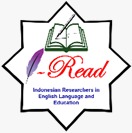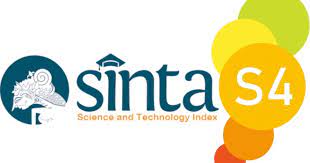Analyzing grammar errors among Hellotalk users and proposing effective correction strategies
DOI:
https://doi.org/10.22219/englie.v5i1.31569Keywords:
hellotalk, grammar, errors, correction, strategiesAbstract
HelloTalk is a popular social media platform where users from diverse linguistic backgrounds converge to communicate and improve their second language (L2) skills. This study focuses on grammatical errors made by users on the HelloTalk app during English interactions. Employing the observation method. Employing a qualitative approach, the study conducted a comprehensive analysis of 357 instances across 280 posts, showcasing a nuanced understanding of the challenges faced by users in their language learning journey. The identified strategies for addressing these errors encompasses several ways such as providing corrective feedback (CF), categorizing errors, utilizing language learning apps for English, and implementing a systematic approach to monitoring and tracking progress. The study's findings provided valuable insights for educators, language learners, and app developers, offering a basis for targeted interventions. Additionally, future research may explore integrating emerging technologies like artificial intelligence and natural language processing to enhance error correction efficiency and personalized feedback on language learning platforms.
Downloads
References
Andringa, S., & Curcic, M. (2015). How explicit knowledge affects online L2 processing: Evidence from differential object marking acquisition. Studies in Second Language Acquisition, 37, 237–268. https://www.jstor.org/stable/26330676
Bagunaid, W., Chilamkurti, N., & Veeraraghavan, P. (2022). AISAR: Artificial Intelligence-Based Student Assessment and Recommendation System for E-Learning in Big Data. Sustainability (Switzerland), 14(17), 1–22. https://doi.org/10.3390/su141710551
Bitchener, J. (2008). Evidence in support of corrective feedback. Journal of Second Language Writing, 17, 102–118. https://doi.org/10.1016/j.jslw.2007.11.004
Bitchener, J., & Ferris, D. (2012). Written corrective feedback in second language acquisition and writing. Routledge.
Bitchener, J., & Knoch, U. (2008). The value of written corrective feedback for migrant and international students. Language Teaching Research, 12, 409–431. https://doi.org/10.1177/1362168808089924
Burston, J. (2015). Twenty years of MALL project implementation: A meta-analysis of learning outcomes. ReCALL, 27(1), 4–20. https://doi.org/10.1017/S0958344014000159
Burt, M., & Kiparsky, C. (1972). The gooficon: A repair manual for English. Newberry House.
Castañeda, D. A., & Cho, M.-H. (2016). Use of a game-like application on a mobile device to improve accuracy in conjugating Spanish verbs. Computer Assisted Language Learning, 29(7), 1195–1204. https://doi.org/10.1080/09588221.2016.1197950
Chandler, J. (2009). Response to Truscott. Journal of Second Language Writing, 18, 57–58. https://doi.org/10.1016/j.jslw.2008.09.002
Chwo, S. M. G., Marek, M. W., & Wu, W.-C. V. (2018). Meta-analysis of MALL research and design. System, 74, 62–72. https://doi.org/10.1016/j.system.2018.02.009
Davis, J. (2016). Social media. The International Encyclopedia of Political Communication. https://doi.org/10.1002/9781118541555.wbiepc004
DeKeyser, R. M. (2015). Skill acquisition theory. In Theories in second language acquisition: An introduction. Routledge.
Dulay, H., Burt, M., & Krashen, S. (1983). Language two. Oxford University Press.
Edge, J. (1989). Mistakes and correction. Longman.
Ellis, R., & Barkhuizen, G. (2005). Analysing learner language. Oxford University Press.
Ellis, R., Sheen, Y., Murakami, M., & Takashima, T. (2008). The effects of focused and unfocused written corrective feedback in an English as a foreign language context. System, 36, 353–371. https://doi.org/10.1016/j.system.2008.02.001
Faiza, D., Bestari, A. C. Y., & Mayekti, M. H. (2020). An analysis of grammatical errors in Kpop tweets. Jurnal Sinestesia, 10(1), 32–40. https://doi.org/10.36232/jurnalsinestesia.v10i1.443
Ferris, D. (2003). Response to student writing: Implications for second language students. Routledge.
Ferris, D. (2010). Second language writing research and written corrective feedback in SLA intersections and practical applications. Studies in Second Language Acquisition, 32, 181–201.
Ferris, D., & Hedgcock, J. (2013). Teaching L2 composition: Purpose, process, and practice. Routledge.
García Botero, G., Questier, F., & Zhu, C. (2019). Self-directed language learning in a mobile-assisted, out-of-class context: Do students walk the talk? Computer Assisted Language Learning, 32(1–2), 71–97. https://doi.org/10.1080/09588221.2018.1485707
Gooch, R., Saito, K., & Lyster, R. (2016). Effects of recasts and prompts on L2 pronunciation development: Teaching English /ɹ/ to Korean adult EFL learners. System, 60, 117–127. https://doi.org/10.1016/j.system.2016.06.007
Graham, S. (2018). Instructional feedback in writing. In The Cambridge Handbook of Instructional Feedback. Cambridge University Press.
Hattie, J., & Timperley, H. (2007). The power of feedback. Review of Educational Research, 77(1), 81–112. https://doi.org/10.3102/003465430298487
HelloTalk News. (2018). Who is on HelloTalk? Get the Data! https://www.hellotalk.com/blog/hellotalk-user-report/
Hendrickson, J. (1978). Error correction in foreign language teaching: Recent research and practice. Modern Language Journal, 62(8), 387–398. https://doi.org/10.2307/326176
Imeldi, M. (2001). Facilitating the first semester of English Department students in writing activity. Universitas Negeri Makassar.
Lee, I. (2019a). Teacher written corrective feedback: Less is more. Language Teaching, 52(4), 524–536. https://doi.org/10.1017/S0261444819000247
Lee, I. (2019b). Teachers’ frequently asked questions about focused written corrective feedback. TESOL Journal, 10(3), e00427. https://doi.org/10.1002/tesj.427
Loewen, S. (2012). The role of feedback. In The Routledge Handbook of Second Language Acquisition. Wiley Blackwell.
Loewen, S., Crowther, D., Isbell, D. R., Kim, K. M., Maloney, J., Miller, Z. F., & Rawal, H. (2019). Mobile-assisted language learning: A Duolingo case study. ReCALL, 31(3), 293–311. https://doi.org/10.1017/S0958344019000065
McManus, K., & Marsden, E. (2018). Online and offline effects of L1 practice in L2 grammar learning: A partial replication. Studies in Second Language Acquisition, 40(2), 459–475. https://doi.org/10.1017/S0272263117000171
Milles, M. B., & Huberman, A. M. (2014). Qualitative Data Analysis. In CEUR Workshop Proceedings (2nd ed.). Sage Publications, Inc.
Murphy, A. F. (2015). Tracking the progress of English language learners. Phi Delta Kappan, 91(3), 25–31. https://doi.org/10.1177/003172170909100306
Pachler, N. (2009). Research methods in mobile and informal learning: Some issues. In G. Vavoula, N. Pachler, & A. Kukulska-Hulme (Eds.), Researching Mobile Learning: Frameworks, Tools and Research Designs (pp. 1–15). Peter Lang Verlag. https://doi.org/10.3726/978-3-0353-0205-9
Politzer, R., & Ramirez, A. (1973). An error analysis of the spoken English of Mexican-American pupils in a bilingual school and in a monolingual school. Language Learning, 18, 35–53.
Reinders, H., & Stockwell, G. (2017). Computer-assisted second language acquisition. In S. Loewen & M. Sato (Eds.), The Routledge Handbook of Instructed Second Language Acquisition (pp. 361–375). Routledge.
Richards, J. C., & Renandya, W. A. (2002). Methodology in Language Teaching: An Anthology of Current Practice. Cambridge University Press.
Rosell-Aguilar, F. (2018). Autonomous language learning through a mobile application: A user evaluation of the busuu app. Computer Assisted Language Learning, 31(8), 854–881. https://doi.org/10.1080/09588221.2018.1456465
Rusmiati, R. (2019). Surface strategy taxonomy on foreign language writing: A study on verb tense usage. Jurnal Serambi Ilmu, 20(2), 189–201. https://doi.org/10.32672/si.v20i2.1453
Saito, Y., & Saito, K. (2017). Differential effects of instruction on the development of second language comprehensibility, word stress, rhythm, and intonation: The case of inexperienced Japanese EFL learners. Language Teaching Research, 21(5), 589–608.
Sharples, M., Arnedillo-Sánchez, I., Milrad, M., & Vavoula, G. (2009). Mobile learning. In N. Balacheff, S. Ludvigsen, T. Jong, S. Lazonder, & S. Barnes (Eds.), Technology-Enhanced Learning (pp. 233–249). Springer Netherlands. https://doi.org/10.1007/978-1-4020-9827-7_14
Sheen, Y. (2007). The effects of corrective feedback, language aptitude, and learner attitudes on the acquisition of English articles. In A. Mackey (Ed.), Conversation Interaction in Second Language Acquisition: A Collection of Empirical Studies (pp. 301–322). Oxford University Press.
Sheen, Y. (2011). Corrective Feedback, Individual Differences and Second Language Learning. Springer.
Sihotang, A. M., Sitanggang, F., Hasugian, N., & Yunanda, F. (2021). Grammatical Errors on Social Media. Jurnal Indonesia Sosial Teknologi, 2(04), 561–567. https://doi.org/10.36418/jist.v2i4.135
Silva, T. (1993). Towards an understanding of the distinct nature of L2 writing: The ESL research and its implications. TESOL Quarterly, 27(4), 657–677. https://doi.org/10.2307/3587400
Smith, B. (2017). Technology-Enhanced SLA Research. In C. A. Chapelle & S. Sauro (Eds.), The Handbook of Technology and Second Language Teaching and Learning (pp. 444–458). Wiley Blackwell. https://doi.org/10.1002/9781118914069
Steel, C. (2012). Fitting learning into life: Language students’ perspectives on benefits of using mobile apps. Ascilite 2012 Conference Proceedings, 875–880.
Sudaryanto. (2015). Metode dan Aneka Teknik Analisis Bahasa. Sanata Dharma University Press.
Tedick, D., & Gortari, B. (1998). Research on error correction and implications for classroom teaching. http://www.carla.umn.edu/immersion/acie/vol1/May1998.pdf
Traxler, J., & Koole, M. (2014). The theory paper: What is the future of mobile learning? In I. A. Sánchez & P. Isaías (Eds.), 10th International Conference on Mobile Learning (pp. 289–293). IADIS Press.
Truscott, J. (2009). Arguments and appearances: A response to chandler. Journal of Second Language Writing, 18, 59–60. https://doi.org/10.1016/j.jslw.2008.09.001
Vesselinov, R. (2009). Measuring the Effectiveness of Rosetta Stone. http://resources.rosettastone.com/CDN/us/pdfs/Measuring_the_Effectiveness_RS-5.pdf
Yuliah, S., Purnamasari, Y., & Yunita, E. (2020). Grammatical errors in social media captions. International Journal of Language and Literature, 8(2), 17–20. https://doi.org/10.15640/ijll.v8n2a3
Downloads
Published
How to Cite
Issue
Section
License
Copyright (c) 2024 Arifin, M.N., Hariyanto, E., Kurniadi, D. & Arvianti, I.

This work is licensed under a Creative Commons Attribution-ShareAlike 4.0 International License.
Authors who publish with English Learning Innovation (englie) agree to the following terms:
- For all articles published in English Learning Innovation (englie), copyright is retained by the authors. Authors give permission to the publisher to announce the work with conditions. When the manuscript is accepted for publication, the authors agree to automatic transfer of the publishing right to the publisher.
- Authors retain copyright and grant the journal right of first publication with the work simultaneously licensed under a Creative Commons Attribution-ShareAlike 4.0 International License that allows others to share the work with an acknowledgement of the work's authorship and initial publication in this journal.
- Authors are able to enter into separate, additional contractual arrangements for the non-exclusive distribution of the journal's published version of the work (e.g., post it to an institutional repository or publish it in a book), with an acknowledgment of its initial publication in this journal.
- Authors are permitted and encouraged to post their work online (e.g., in institutional repositories or on their website) prior to and during the submission process, as it can lead to productive exchanges, as well as earlier and greater citation of published work (See The Effect of Open Access).
This work is licensed under a Creative Commons Attribution-ShareAlike 4.0 International License.
















1.png)












